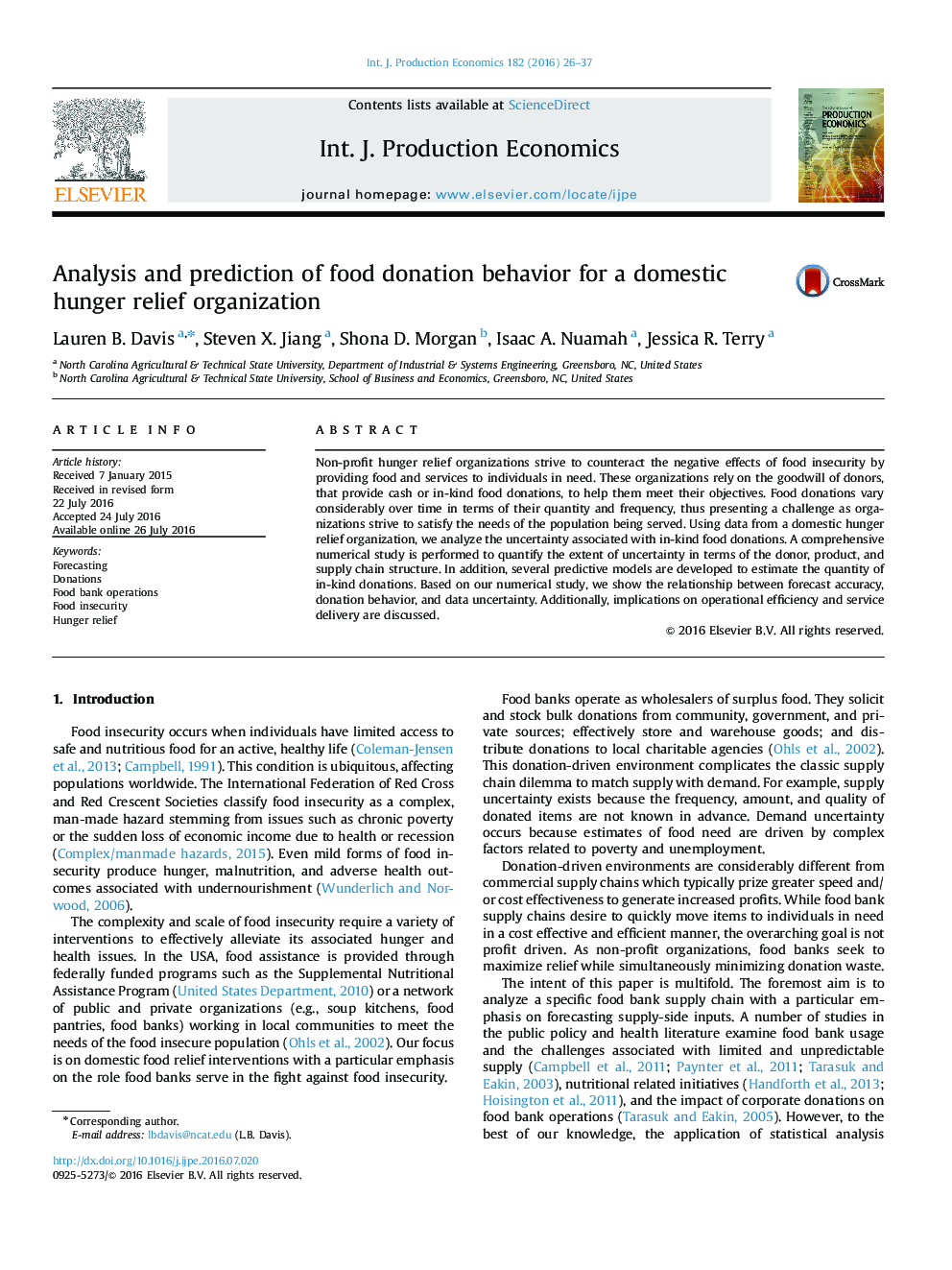| کد مقاله | کد نشریه | سال انتشار | مقاله انگلیسی | نسخه تمام متن |
|---|---|---|---|---|
| 5079206 | 1477524 | 2016 | 12 صفحه PDF | دانلود رایگان |
• Time series models are developed to predict donation behavior.
• The value of forecast information is evaluated by donor, product, and location.
• Forecast accuracy is characterized by forecasted unit and coefficient of variation.
• Donation forecasts are used to predict the number of under-served counties.
• Traditional approaches for demand prediction show promise when applied to supply prediction.
Non-profit hunger relief organizations strive to counteract the negative effects of food insecurity by providing food and services to individuals in need. These organizations rely on the goodwill of donors, that provide cash or in-kind food donations, to help them meet their objectives. Food donations vary considerably over time in terms of their quantity and frequency, thus presenting a challenge as organizations strive to satisfy the needs of the population being served. Using data from a domestic hunger relief organization, we analyze the uncertainty associated with in-kind food donations. A comprehensive numerical study is performed to quantify the extent of uncertainty in terms of the donor, product, and supply chain structure. In addition, several predictive models are developed to estimate the quantity of in-kind donations. Based on our numerical study, we show the relationship between forecast accuracy, donation behavior, and data uncertainty. Additionally, implications on operational efficiency and service delivery are discussed.
Journal: International Journal of Production Economics - Volume 182, December 2016, Pages 26–37
